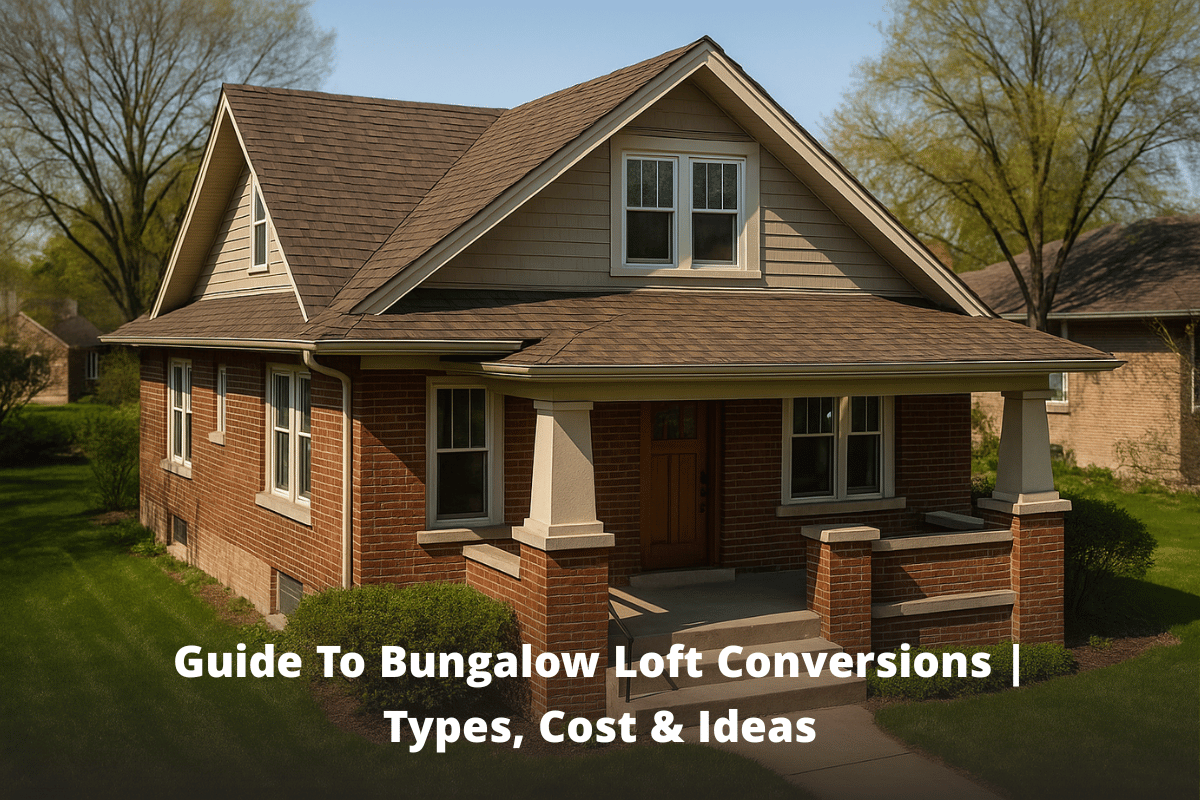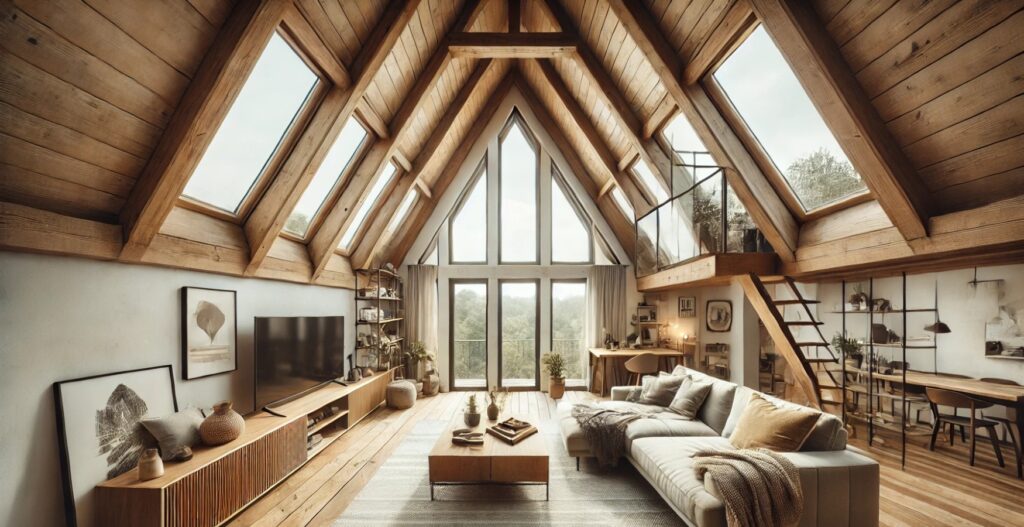
Looking to sort your loft flooring?
It’s a bit trickier than your average room – you’ve got weight limits, wonky temps and those lovely sloping ceilings to think about.
But get it right, and you’ll create a proper usable space that doesn’t creak, sag or cost the earth.
Here’s our no-nonsense guide to nailing your loft floor.
Key Summary
- A hip-to-gable loft conversion costs between £40,000 and £65,000 in 2024, with London prices often higher.
- Expect added costs for hidden factors like drainage, permits, and stair access.
- Besides added space, a hip-to-gable loft conversion adds value to your property.
Understanding Loft Flooring Needs
Lofts are unique spaces. They often sit under sloping ceilings, deal with weight restrictions, and might not be as thermally insulated as the rest of your home.
That means you need to consider a few factors:
1. Weight Limitations
Many lofts have weaker joists compared to other floors. Strengthening the loft floor may be necessary if you’re planning on using heavy materials like tiles.
2. Thermal and Sound Insulation
Lofts can amplify noise. Plus, heat rises, so loft flooring ideas often focus on materials that help regulate temperature.
3. Purpose of the Space
A bedroom loft might benefit from cosy loft carpet, while a loft bathroom needs waterproof, durable options.
Best Flooring Options for Lofts
1. Engineered Wood Flooring
Engineered wood is a top contender for loft wood flooring. It’s lightweight, durable, and gives you that premium, classic look without the structural stress of solid wood.
Thanks to its multi-layer construction, it can handle temperature fluctuations better than traditional hardwood.
Pros
- Elegant
- Compatible with underfloor heating
- Available in many finishes
Cons
- Pricier than laminate
- Needs occasional refinishing
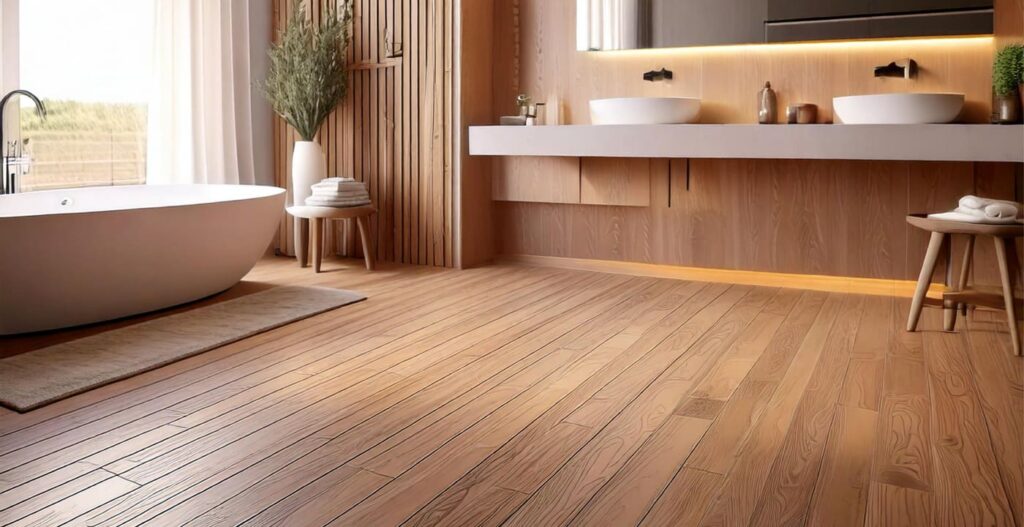
2. Laminate Flooring
If you love the look of wood but need a budget-friendly option, laminate is your go-to. It looks like real wood grain but comes with less hassle and maintenance.
Laminate is also scratch-resistant, making it great for high-traffic areas or kids’ playrooms.
Pros
- Affordable
- Low-maintenance
- Lightweight
Cons
- Noisy without an underlay
- Not for damp areas
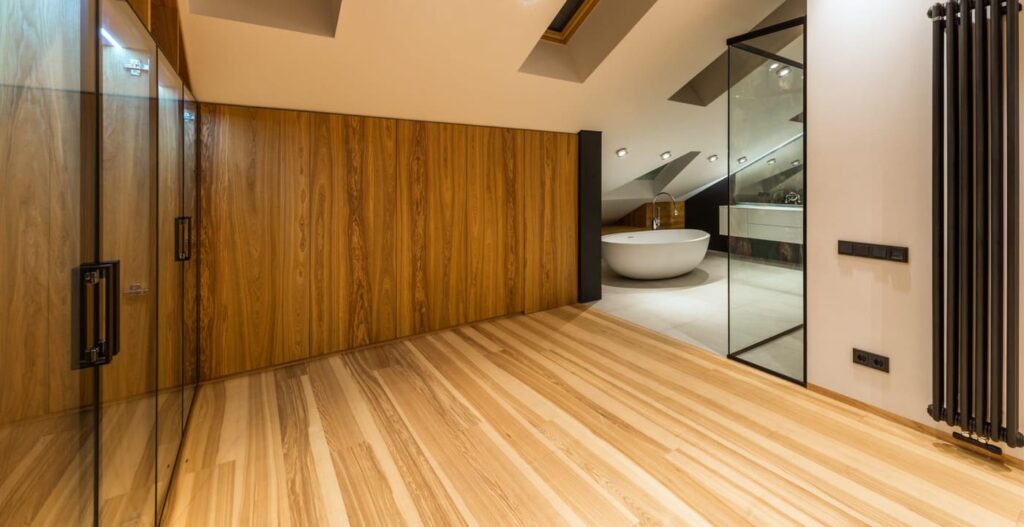
3. Carpet
For warmth and quiet, it’s hard to beat loft carpet. It muffles noise, making it ideal for spaces directly above bedrooms or living rooms.
Plus, it’s soft underfoot, creating a cosy vibe.
Pros
- Soundproofing and insulation
- Comfortable
Cons
- Harder to clean
- Not moisture-resistant
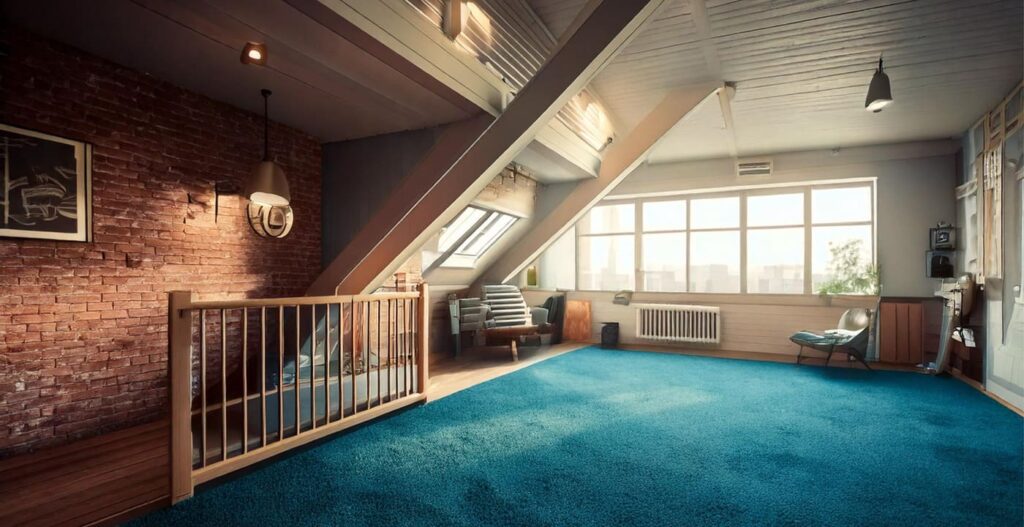
4. Luxury Vinyl Tile (LVT)
Luxury vinyl tile is versatile and practical. It’s waterproof, durable, and available in designs that mimic wood or stone.
LVT is also great for wet areas like loft bathrooms or kitchens, where other materials might struggle.
Pros
- Water-resistant
- Stylish
- Easy to clean
Cons
- Needs a perfectly flat subfloor
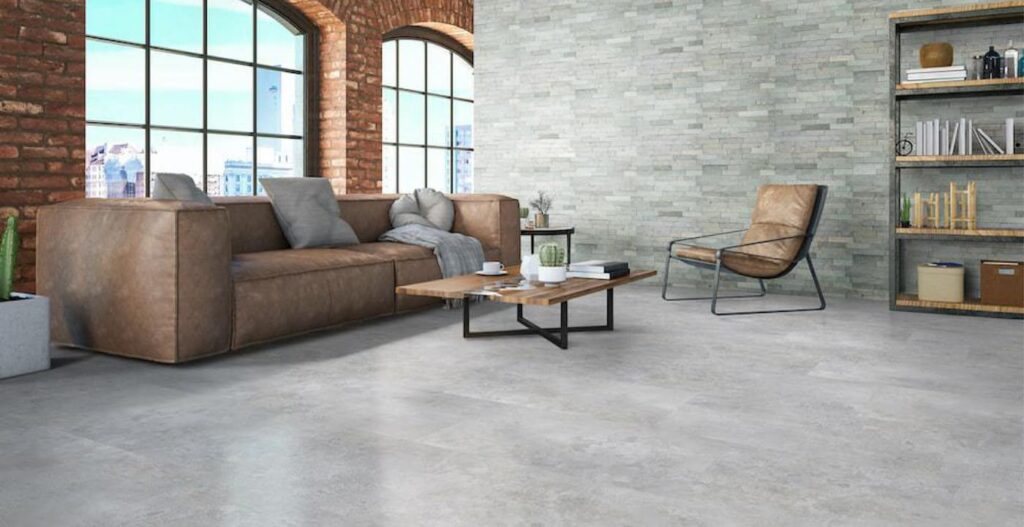
5. Cork Flooring
If eco-friendliness matters to you, cork is a standout option for flooring in a loft space. It’s sustainable, naturally insulates heat and sound, and feels comfortable to walk on.
Pros
- Quiet
- Thermal insulation
- Renewable material
Cons
- Susceptible to dents and scratches
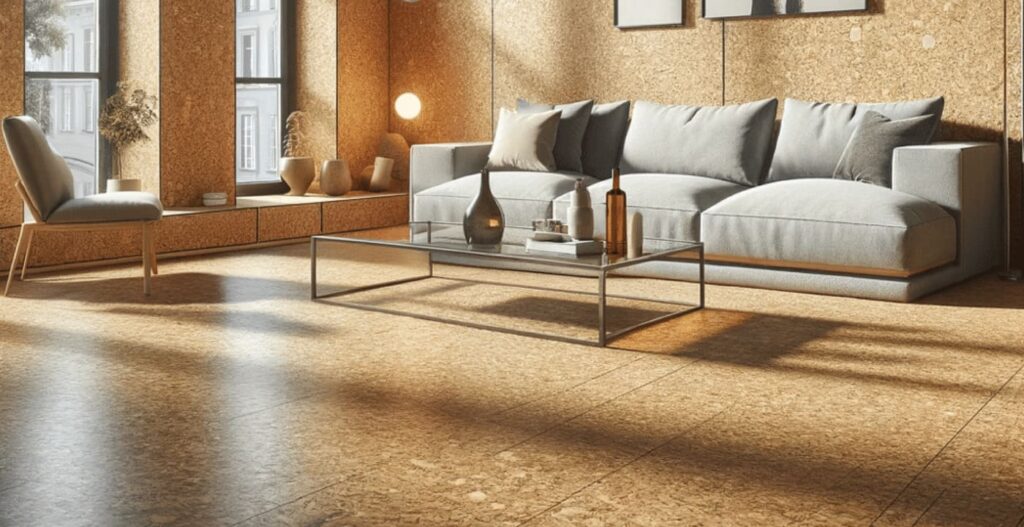
Best Flooring Options for Lofts
| Flooring Type | Key Benefits | Drawbacks |
|---|---|---|
| Engineered Wood | Lightweight, stylish | Expensive |
| Laminate | Affordable, durable | Noisy without underlay |
| Carpet | Soundproof, warm | Harder to clean, stains easily |
| Luxury Vinyl Tile | Waterproof, versatile | Needs flat subfloor |
| Cork | Quiet, eco-friendly | Prone to dents |
Loft Flooring Factors to Keep In Mind
Before finalising your choice, think about these practical considerations:
Weight Capacity: Always check if the loft structure can handle your chosen material. If necessary, consider strengthening the loft floor to ensure safety.
Budget: While engineered wood offers timeless elegance, laminate and LVT provide cheaper alternatives without compromising on durability.
Moisture Levels: For loft bathrooms or kitchens, focus on water-resistant options like LVT or treated cork.
Underfloor Heating: Pair compatible materials like engineered wood or vinyl with this system for a warm, inviting space.
How to Floor a Loft: Installation Tips
Planning to renovate your loft yourself? Here are a few useful tips to keep things manageable when it comes to flooring:
Measure Twice: Accurate dimensions prevent material wastage and ensure a snug fit.
Use Soundproof Underlays: Especially with hard surfaces like laminate or wood, an underlay can reduce noise.
Prioritise Professional Help: Installing materials like loft wood flooring or luxury vinyl might look simple, but pros ensure precision.
Frequently Asked Questions
What is the best flooring for lofts?
It depends on your needs. Engineered wood is excellent for aesthetics and durability, while carpet provides warmth and quiet. For moisture-prone areas, opt for LVT.
Can I use tiles for loft flooring?
Yes, you can use tiles in loft spaces, but they are best suited for areas like bathrooms or kitchens. Keep in mind that tiles are heavy, so you may need to strengthen the loft floor to support the added weight.
Is it worth strengthening a loft floor?
If your flooring choice or planned use adds significant weight, strengthening the loft floor ensures safety and long-term stability.
Conclusion
From engineered wood’s sleek charm to cork’s eco-friendly punch, we’ve mapped out the best flooring for a loft that checks every box.
Weight limits? Conquered. Sound issues? Silenced. Budget constraints? Smashed.
If your loft is a blank canvas screaming for personality, then the right floor is your first brushstroke. Ready to turn potential into reality? Browse our various loft types and get your project on the go.

